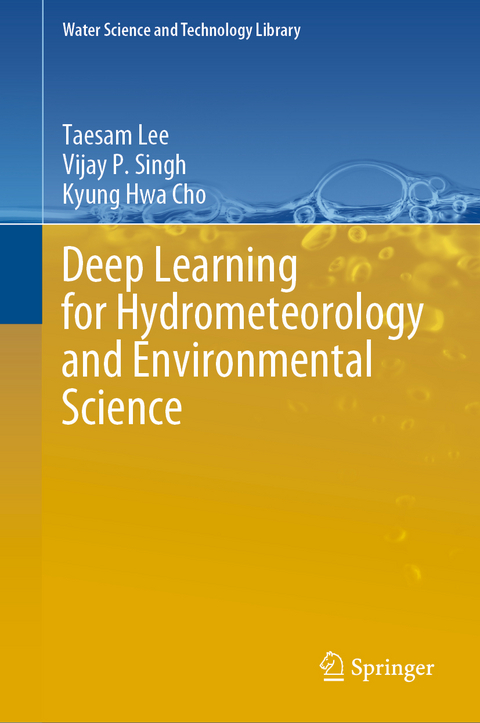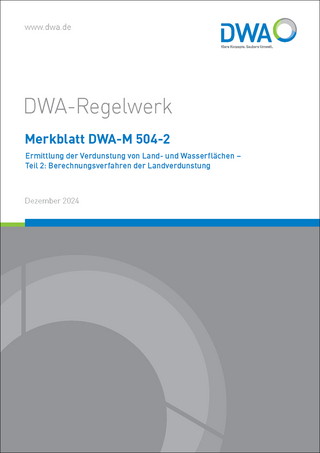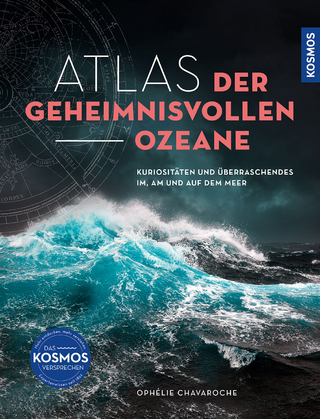
Deep Learning for Hydrometeorology and Environmental Science
Springer International Publishing (Verlag)
978-3-030-64776-6 (ISBN)
This book provides a step-by-step methodology and derivation of deep learning algorithms as Long Short-Term Memory (LSTM) and Convolution Neural Network (CNN), especially for estimating parameters, with back-propagation as well as examples with real datasets of hydrometeorology (e.g. streamflow and temperature) and environmental science (e.g. water quality).
Deep learning is known as part of machine learning methodology based on the artificial neural network. Increasing data availability and computing power enhance applications of deep learning to hydrometeorological and environmental fields. However, books that specifically focus on applications to these fields are limited.
Most of deep learning books demonstrate theoretical backgrounds and mathematics. However, examples with real data and step-by-step explanations to understand the algorithms in hydrometeorology and environmental science are very rare.
This book focuses on the explanation of deep learning techniques and their applications to hydrometeorological and environmental studies with real hydrological and environmental data. This book covers the major deep learning algorithms as Long Short-Term Memory (LSTM) and Convolution Neural Network (CNN) as well as the conventional artificial neural network model.
lt;b> Professor Taesam Lee, Ph.D. is a full professor in the Department of Civil Engineering at Gyeongsang National University in Jinju, South Korea. He got his Ph.D. degree from Colorado State University with stochastic simulation of streamflow. He specializes in surface-water hydrology, meteorology, machine learning algorithms, and climatic changes in hydrological extremes publishing around 50 technical papers and a statistical downscaling book. He is a member of American Society of Civil Engineers (ASCE) and American Geophysical Union (AGU) and the associate editor of Journal of Hydrologic Engineering in ASCE.
Professor V.P. Singh is a University Distinguished Professor, a Regents Professor, and Caroline and William N. Lehrer Distinguished Chair in Water Engineering at Texas A&M University. He received his B.S., M.S., Ph.D. and D.Sc. degrees in engineering. He is a registered professional engineer, a registered professional hydrologist, and an Honorary diplomate of ASCE-AAWRE. He has published more than 1270 journal articles; 30 textbooks; 70 edited reference books; 105 book chapters; and 315 conference papers in the area of hydrology and water resources. He has received more than 90 national and international awards, including three honorary doctorates. He is a member of 11 international science/engineering academies. He has served as President of the American Institute of Hydrology (AIH), Chair of Watershed Council of American Society of Civil Engineers, and is currently President-Elect of American Academy of Water Resources Engineers. He has served/serves as editor-in-chief of three journals and two book series and serves on editorial boards of more than 25 journals and three book series.
Professor Kyung Hwa Cho, Ph.D. is an associate professor in the urban and environmental at Ulsan National Institute of Science and Technology, South Korea. He obtained his B.S in chemical engineering and M.S. and Ph.D. in Environmental Engineering. He has published more than 110 journal articles in water and environmental journals such as Water Research, Remote Sensing of Environment. His expertise lies in modeling water quality, deep learning application for water quality prediction, and using hyperspectral images for water quality monitoring.Introduction.- Mathematical Background.- Data Preprocessing.- Neural Network.- Training a Neural Network.- Updating Weights.- Improving model performance.- Advanced Neural Network Algorithms.- Deep learning for time series.- Deep learning for spatial datasets.- Tensorflow and Keras Programming for Deep Learning.- Hydrometeorological Applications of deep learning.- Environmental Applications of deep learning.
| Erscheinungsdatum | 29.01.2021 |
|---|---|
| Reihe/Serie | Water Science and Technology Library |
| Zusatzinfo | XIV, 204 p. 189 illus., 133 illus. in color. |
| Verlagsort | Cham |
| Sprache | englisch |
| Maße | 155 x 235 mm |
| Gewicht | 487 g |
| Themenwelt | Naturwissenschaften ► Geowissenschaften ► Hydrologie / Ozeanografie |
| Schlagworte | Artificial Neural Networks • Climate index • convolutional neural networks • Hydrology • Lon Short-Term Memory (LSTM) • meteorology |
| ISBN-10 | 3-030-64776-5 / 3030647765 |
| ISBN-13 | 978-3-030-64776-6 / 9783030647766 |
| Zustand | Neuware |
| Informationen gemäß Produktsicherheitsverordnung (GPSR) | |
| Haben Sie eine Frage zum Produkt? |
aus dem Bereich


